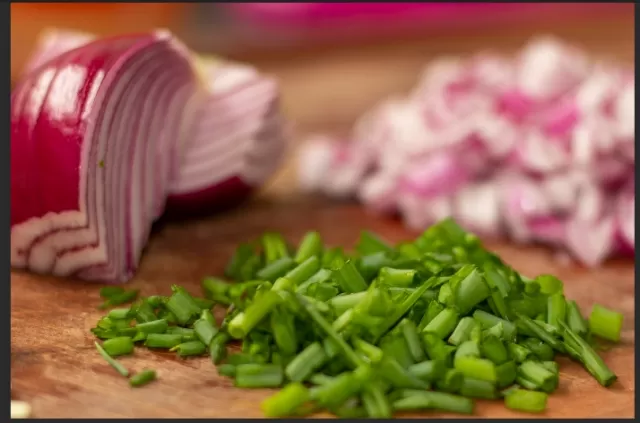Dangerous Foods: Never Feed These to Your Dog. Recognizing and Responding to Toxic Food Exposure in Dogs
Our canine companions’ curious nature can lead them to explore and sometimes ingest foods that may pose a threat to their health. While many foods are harmless to dogs, some can be toxic, with potentially serious consequences. Sage De Rosa, DVM, assistant professor of clinical emergency and critical care at the University of Pennsylvania School of Veterinary Medicine, emphasizes the importance of prompt action when a pet shows symptoms of toxic food exposure.
Symptoms of toxic food exposure in dogs may include vomiting, a decrease in appetite, lethargy, altered breathing, incoordination, or obvious pain. When these signs are observed, reaching out immediately to a veterinarian and the Pet Poison Helpline (800-213-6680) is crucial, advises Whitney Miller, DVM, MBA, DACVPM, chief veterinarian at Petco.
Veterinarians rely on owners to provide information about potential toxin exposure, making it essential for pet owners to communicate any incidents of their dog ingesting harmful foods. The list of toxic foods includes caffeine, chocolate, raw bread dough, onions, sweetener, and grapes. In cases of suspected exposure, being prepared to answer questions about the ingested or potentially ingested substances can aid in accurate diagnosis and timely treatment.
By staying vigilant, recognizing symptoms, and seeking immediate veterinary assistance, pet owners can play a vital role in safeguarding their dogs from the dangers of toxic foods and ensuring their well-being.
Be Vigilant: The Dangers of Chocolate for Dogs

Chocolate, a beloved treat for humans, poses significant risks to our canine companions due to the presence of theobromine and caffeine—two methylxanthine compounds found in various chocolate varieties.
These compounds can have detrimental effects on a dog’s gastrointestinal tract, central nervous system, and heart, potentially leading to a range of health issues.
Among the potential consequences of chocolate ingestion in dogs are vomiting and diarrhea, seizures, abnormal heartbeat, and muscle tremors.
It’s crucial to note that dark chocolate is more toxic than milk or white chocolate, although all types should be strictly avoided for canine consumption.
Dr.Miller emphasizes the severity of the situation, stating that, “Dark chocolate is more toxic than milk or white chocolate, though all chocolates should be avoided. ” If there is a suspicion that a dog has consumed chocolate, immediate veterinary attention is essential.
Dr.De Rosa advises swift action, stating, “Depending on the type of chocolate ingested, the amount and how recent the ingestion was, vomiting may be induced. ” The severity of the situation will determine if in-hospital monitoring and treatment are necessary.
In essence, dog owners should remain vigilant about keeping chocolate out of reach and promptly seek professional veterinary assistance if chocolate ingestion is suspected.
The potential risks underscore the importance of responsible pet ownership, ensuring a safe environment for our four-legged friends.
Beware the Dangers of Caffeine for Dogs
It’s important to recognize that caffeine, independent of its presence in chocolate, poses a serious threat to dogs.
Dr. Miller advises pet owners to be vigilant and restrict their dog’s access to various sources of caffeine, including coffee grounds, energy drinks, medications, and other household items containing this stimulant.
The potential consequences of caffeine ingestion in dogs can manifest in various ways.
Dr. Miller highlights specific signs to watch for, including rapid breathing, restlessness, abnormal heartbeat, high body temperature, and muscle tremors.
These symptoms serve as crucial indicators that a dog may have ingested caffeine and prompt intervention is necessary.
Given the pervasive nature of caffeine-containing products in households, responsible pet ownership involves not only being aware of the dangers but also taking proactive measures to prevent accidental ingestion.
This includes securing coffee grounds, medications, and other items containing caffeine in locations inaccessible to pets.
In summary, caffeine poses a serious risk to dogs, and pet owners should be proactive in safeguarding their canine companions from potential exposure.
Being informed about the signs of caffeine ingestion and maintaining a caffeine-free environment for pets is paramount in ensuring their well-being.
Steer Clear: Garlic, Onion, and Chives Pose Risks to Dogs

While garlic, onions, and chives enhance the flavor of our culinary creations, it’s crucial for pet owners to recognize that these savory herbs, belonging to the allium family, contain compounds that can be harmful to dogs.
Dr. Miller underscores the potential danger, explaining that these compounds can cause oxidative damage to dogs’ cells.
The toxicity levels vary within this herb family, with onions being most toxic in larger quantities.
However, even concentrated powders from spice cabinets or soup mixes can lead to adverse reactions when ingested by a dog. Initial symptoms may include vomiting, but the more serious consequences involve the destruction of red blood cells, potentially leading to anemia.
Dr.
Miller outlines symptoms of poisoning to watch for, which include lethargy and/or weakness, pale gums, and discolored urine. Recognizing these signs is essential for prompt intervention and veterinary care.
In essence, responsible pet ownership involves not only being cautious about feeding dogs foods containing garlic, onions, or chives but also preventing access to concentrated forms, such as powders.
Vigilance in monitoring for symptoms and seeking professional veterinary assistance if poisoning is suspected is critical in ensuring the well-being of our canine companions.
Beware the Hidden Dangers: Grapes and Raisins Pose Serious Risks to Dogs
Despite ongoing research to pinpoint the exact compound responsible, the toxicity of grapes and raisins to dogs remains a serious concern.
Current evidence suggests tartaric acid as a potential culprit, but the precise mechanism isn’t fully understood. What is clear, however, is that the consumption of both fresh and dried versions of these fruits can lead to kidney damage in dogs.
Dr.Miller explains that exposure to grapes and raisins can result in a buildup of tannins and other elements in the kidneys, which dogs are unable to process. The poisoning often occurs in two stages.
In the initial 24 hours, symptoms may include lethargy, lack of appetite, dehydration, and rapid breathing. Subsequently, further signs of kidney failure may manifest, such as vomiting, excessive thirst or urination, abdominal pain, and even coma.
Dr.De Rosa emphasizes the unpredictable nature of the toxicity, stating, “It should be assumed that all dogs could develop disease from this food, as there is no way to know prior to exposure. ” While some dogs may not show adverse effects, others can experience severe and potentially life-threatening toxicity.
In light of this, responsible pet ownership involves taking proactive measures to keep grapes and raisins out of reach and promptly seeking veterinary attention if ingestion is suspected.
Given the unpredictability of individual dog reactions, prevention is key in safeguarding the health of our beloved canine companions.
Danger Rising: The Perils of Bread Dough for Dogs

That seemingly innocent bread dough left to rise on the kitchen counter can pose significant risks to dogs, making it crucial for pet owners to be aware of the potential dangers.
Dr. De Rosa sheds light on the hazards associated with dogs consuming bread dough, particularly when it comes to the fermentation process.
The yeast in bread dough produces alcohol and gas as it ferments.
Dr. De Rosa points out that the absorption of alcohol from the stomach into the bloodstream can result in a range of concerning symptoms.
These may include vomiting and diarrhea, increased thirst, low blood sugar, incoordination, tremors, seizures, and even death.
Additionally, the gas generated by the fermenting dough can lead to stomach bloating, causing discomfort and, more critically, cardiovascular compromise.
Dr. De Rosa emphasizes the urgency of the situation, stating, “If your dog consumes raw dough, an emergency visit to your vet is warranted.”.
Responsible pet ownership entails not only safeguarding the kitchen counter from inquisitive dogs but also being aware of the potential dangers associated with seemingly harmless items like bread dough.
Swift action and immediate veterinary attention are essential if ingestion occurs, ensuring the well-being and safety of our canine companions.
*The information is for reference only.